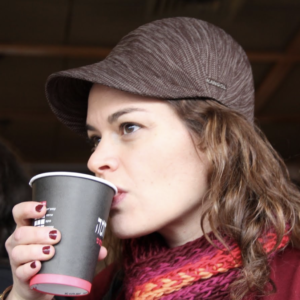It is not uncommon for one standing before a work of art to feel a sense of distance, as the works of great masters are humbling. It is natural for a viewer to feel intimidated in their presence.
This is not the case in viewing the works of Sol LeWitt. Is it easy to get lost in the lines, to roam amidst the rhomboids, and be enveloped by the vibrant patterns etched on the walls. Viewers are invited to meditate on the nature of space, to feel the sensory effects of light, to draw themselves in the graphite lines, and be colored by the playful panels. There is little distance between the viewer and the wall.
This may be because while the walls reflect the vision of one, they are executed by the hands of many. The process by which they were created is one of collaboration. All of LeWitt’s geometric structures and scaled wall drawings follow a set of basic instructions that, in theory, can be executed by anyone. In fact, listed on the wall label accompanying each individual work are the names of each person who contributed to its making.
It is this open and democratic vision at the core of LeWitt’s art that – in my mind – makes it most compelling.
Walking through LeWitt’s walls at Mass MoCA on multiple occasions, I cannot help but draw lines to the experience felt when studying as a community in a Beit Midrash. Our sacred texts sit at the core of my very being, with a set of instructions to follow, a vision articulated, guidance provided. But we do not just stand in awe at the art created by someone else. We are drawn in as part of the process. We are all invited to be part of the art of talmud Torah, and given the opportunity to be collaborators in the creation of beautiful and intricate tapestries (or wall art).
There is an Artist, but we are all part of the artistic team.





